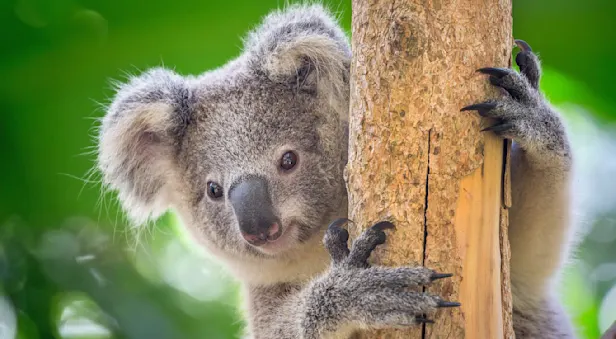Know Before You Go
Bandicoot Facts | Australia South Wildlife Guide
Related to the endangered bilby, the bandicoot is an ecosystem engineer all its own. Together with other forest floor dwellers, such as bettongs and potoroos, the bandicoot brings vital nutrients to the surface by turning over soil. Rabbit-sized and equipped with the features of a rat, this prolific digger can shift an elephant’s worth of soil in a year—that’s roughly 28 pounds in a single night! Rarely seen, their presence is observed by the small, conical holes they leave behind in suburban lawns after a nightly forage for insects and other small invertebrates. Their diggings increase water saturation and germinate mycorrhizal fungi—a keystone species. During the day, bandicoots escape the sun by sleeping in rabbit burrows and shallow holes lined with leaf litter and concealed by dense vegetation.
Unlike other marsupials, bandicoots have a placenta. At just 12 days—one of the shortest gestation periods of any mammal—a female gives birth to 2 to 6 young. Owls, quolls, tiger snakes and dingoes are their natural predators; when startled, the bandicoot leaps six feet into the air and emits a loud whistling squeak (one of four distinct vocalizations they use to communicate).
At the time of European settlement, the southern brown bandicoot was common in coastal Australia, but due to habitat fragmentation and the introduction of red foxes and feral and domestic cats, their range and distribution is now limited to southern Australia and Tasmania. This type of short-nosed bandicoot prefers areas with high rainfall and thick ground cover, where it is safe to search for insects, worms, fungi and plant roots.
The eastern barred bandicoot once occurred from the far south-east of southern Australia through near-coastal south-western Victoria to near Melbourne, and across most of Tasmania. The last record from southern Australia was in the late 1800s and the last wild Victorian subpopulation was presumed extinct in 2002. Disappearance from the mainland is owed to introduced predators like foxes and habitat destruction from introduced herbivores such as sheep and rabbits. This taxon now exists in two reintroduced populations within predator-proof fencing, west of Melbourne. These endangered mammals are making a comeback thanks to a herd of sheepdogs, trained to ward off fox attacks.
Travel to Australia on These Adventures

Australia South: Tasmania, Kangaroo Island & the Great Ocean Road
Discover the diverse landscapes and ecology of far-south Australia as we explore four national parks and a host of private nature reserves teeming with endemic and endangered wildlife.


Australia North: Kakadu, Kimberley & the Outback
Journey to the back of beyond on this singular itinerary that connects three of Australia’s most remote tracts of untouched wilderness via private chartered flights—plus a luxury train trip on The Ghan.
























